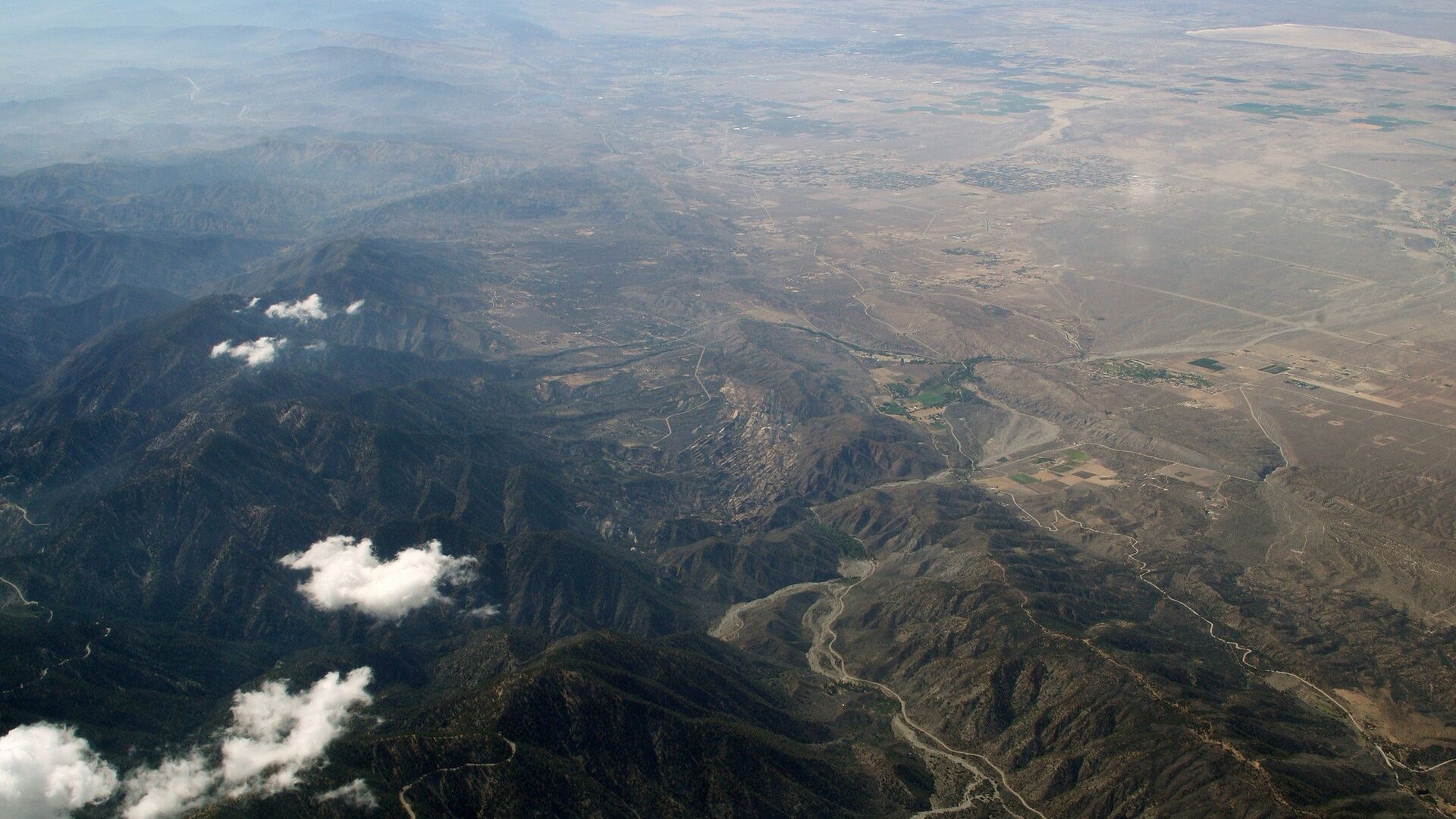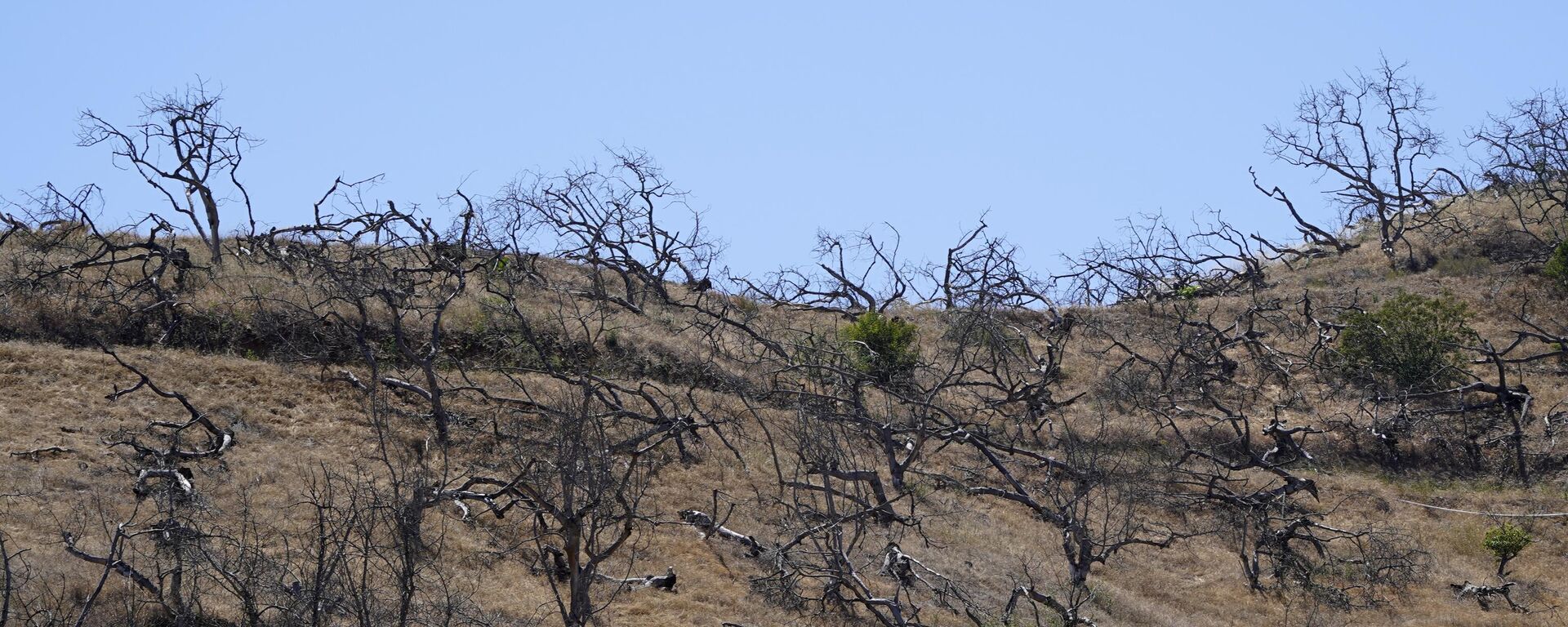https://sputnikglobe.com/20230609/officials-find-link-between-drying-salton-sea--lack-of-major-quakes-in-los-angeles-1111019366.html
Officials Find Link Between Drying Salton Sea & Lack of Major Quakes in Los Angeles
Officials Find Link Between Drying Salton Sea & Lack of Major Quakes in Los Angeles
Sputnik International
New research has shed light on why the southern San Andreas fault in California has not experienced a major earthquake in over 300 years.
2023-06-09T03:42+0000
2023-06-09T03:42+0000
2023-06-09T03:41+0000
beyond politics
science & tech
us
california
los angeles
us geological survey (usgs)
earthquake
earthquakes
earthquakes
us geological survey
https://cdn1.img.sputnikglobe.com/img/104324/83/1043248309_0:171:2048:1323_1920x0_80_0_0_788692bbf752dae8774addba841990a1.jpg
New findings have shed light on why the southern San Andreas fault in California has not experienced a major earthquake in over 300 years, raising a new set of concerns for locals.The study suggests that the drying of the nearby Salton Sea may be the cause of the seismic drought and provides important insights into potential earthquake triggers, including plans to refill the body of water.Officials have indicated that the accumulated energy along the locked section of the San Andreas fault has the potential to cause significant damage to the densely populated Los Angeles metropolitan area if released in a major earthquake.The recent study focused on earthquake activity along the southern San Andreas fault over the past millennium, with researchers collecting field data from rocks near the fault that revealed earthquakes occurred approximately every 180 years, with a margin of error of 40 years. These quakes coincided with high water levels in the ancient Lake Cahuilla.The research team developed a computer model to simulate the impact of a full lake on the fault, discovering that high water levels in Lake Cahuilla influenced the fault in two ways:The analogy of air hockey was used to explain the scenario. Without air, the puck does not slide easily across the table, similar to how frictional forces keep tectonic plates stuck together. When air (or water) is introduced, it reduces tension and allows the plates to slip past each other more easily.The research also suggests that filling water reservoirs in other areas could potentially trigger earthquakes.Regarding the present-day Salton Sea, researchers note the chances of it refilling to the size of the ancient Lake Cahuilla are impossible due to drought and water allocation issues.However, the study highlights it is not necessarily the volume of water that adds stress, but the rate at which the lake could be refilled. The finding has since raised concerns about plans to restore and refill the Salton Sea.The study was published in Nature journal.
https://sputnikglobe.com/20230516/incredible-coincidence-two-quakes-hit-us-mexico-border-at-nearly-same-time-1110389866.html
california
los angeles
Sputnik International
feedback@sputniknews.com
+74956456601
MIA „Rossiya Segodnya“
2023
News
en_EN
Sputnik International
feedback@sputniknews.com
+74956456601
MIA „Rossiya Segodnya“
Sputnik International
feedback@sputniknews.com
+74956456601
MIA „Rossiya Segodnya“
us earthquake, salton sea, san andreas fault, north american and pacific plates, usgs, earthquake danger in los angeles, lake cahuilla
us earthquake, salton sea, san andreas fault, north american and pacific plates, usgs, earthquake danger in los angeles, lake cahuilla
Officials Find Link Between Drying Salton Sea & Lack of Major Quakes in Los Angeles
The San Andreas fault, stretching 800 miles and marking the meeting point of the North American and Pacific tectonic plates, has historically been divided into three sections. The southern section, running from the Salton Sea to Parkfield, has been notably quiet - a cause for concern among officials.
New findings have shed light on why the southern San Andreas fault in California has not experienced a major earthquake in over 300 years, raising a new set of concerns for locals.
The study suggests that the drying of the nearby Salton Sea may be the cause of the seismic drought and provides important insights into potential earthquake triggers, including plans to refill the body of water.
Officials have indicated that the accumulated energy along the locked section of the San Andreas fault has the potential to cause significant damage to the densely populated Los Angeles metropolitan area if released in a major earthquake.
"Our study shows that the lake by itself was sufficient enough to trigger events on the southern San Andreas fault — and large events," said Ryley Hill, lead author and PhD candidate at San Diego State University. "This is pretty applicable to pretty much anywhere where hydrologic loading, either natural or anthropogenic, exists."
The recent study focused on earthquake activity along the southern San Andreas fault over the past millennium, with researchers collecting field data from rocks near the fault that revealed earthquakes occurred approximately every 180 years, with a margin of error of 40 years. These quakes coincided with high water levels in the ancient Lake Cahuilla.
The research team developed a computer model to simulate the impact of a full lake on the fault, discovering that high water levels in Lake Cahuilla influenced the fault in two ways:
The weight of the lake water caused the crust beneath it to bend, relieving the pressure between the plates.
The water infiltrated the cracks and pores in the Earth's crust, increasing the fluid pressure within the fault and further separating the plates.
The analogy of air hockey was used to explain the scenario. Without air, the puck does not slide easily across the table, similar to how frictional forces keep tectonic plates stuck together. When air (or water) is introduced, it reduces tension and allows the plates to slip past each other more easily.
"If previous earthquakes on it occurred every 180 years, plus or minus 40 years, why is it that we sit on 300 years without an earthquake?" asked Hill. "This made a lot of scientists scratch their heads for many years. Understanding the history of this fault and what may have caused ruptures in the past helps us inform our understanding of what might happen in the future."
The research also suggests that filling water reservoirs in other areas could potentially trigger earthquakes.
Regarding the present-day Salton Sea, researchers note the chances of it refilling to the size of the ancient Lake Cahuilla are impossible due to drought and water allocation issues.
However, the study highlights it is not necessarily the volume of water that adds stress, but the rate at which the lake could be refilled. The finding has since raised concerns about plans to restore and refill the Salton Sea.
Earthquakes occur when tectonic plates become stuck at their boundaries due to friction and stress builds up over time. When the stress overcomes the frictional forces, the plates slip past each other, releasing energy in the form of seismic waves and causing shaking.
The US Geological Survey has estimated a high probability of a magnitude 6.7 or greater earthquake occurring in the Los Angeles area within the next 30 years.
The study was published in
Nature journal.



